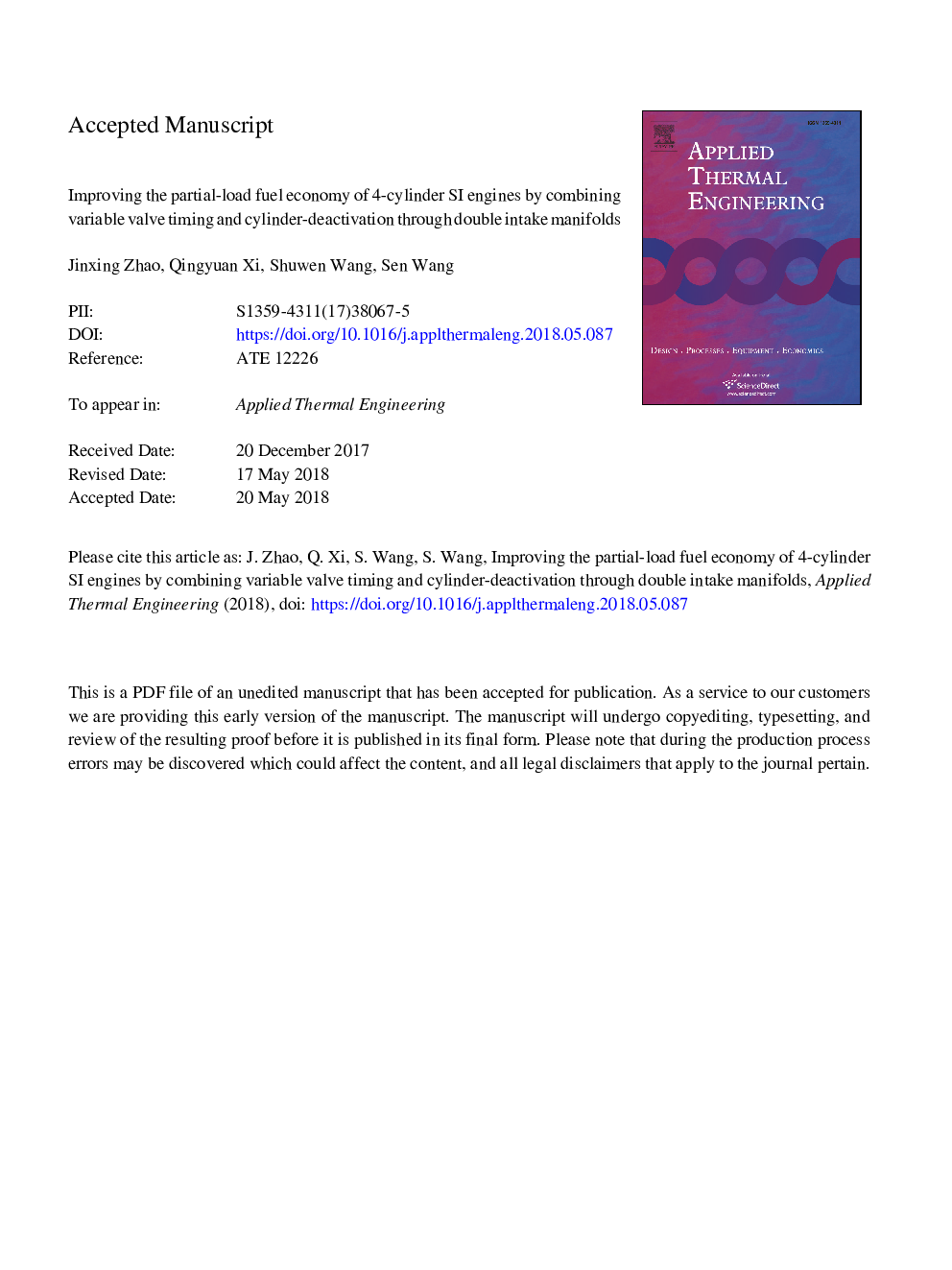| Article ID | Journal | Published Year | Pages | File Type |
|---|---|---|---|---|
| 7044925 | Applied Thermal Engineering | 2018 | 28 Pages |
Abstract
The SI engines in passenger cars run in the partial-load conditions in the most time especially in the urban driving cycles; thus it is particularly important to improve the partial-load fuel economy. Cylinder deactivation (CDA) and variable valve timing (VVT) could be applied to improve the fuel economy in the middle to low load region. Current CDA technologies are realized by deactivating all intake and exhaust valves (CDAV) of the inactive cylinders with special mechanisms increasing system cost and complexity. An innovative CDA method is proposed for 4-cylinder SI engines through double intake manifolds (CDAM). A novel load control strategy combining the CDAM and VVT along with late intake valve closure (LIVC) has been investigated. The results show that the pumping loss decreases by 58.9-65.6% and 24.5-35.3%; and the fuel economy improves by 5.5-17.6% and 3.1-9.2% in the CDA mode at 2000â¯rpm and 4000â¯rpm, respectively. The fuel economy in the full-cylinder mode also improves by 0.68-2.95% because of the application of the double intake manifolds. The strategy is more effective in the low speed range and more suitable for the urban driving cycles. Although a less fuel economy improvement than the CDAV method, the CDAM method can be realized with less cost and complexity.
Related Topics
Physical Sciences and Engineering
Chemical Engineering
Fluid Flow and Transfer Processes
Authors
Jinxing Zhao, Qingyuan Xi, Shuwen Wang, Sen Wang,
